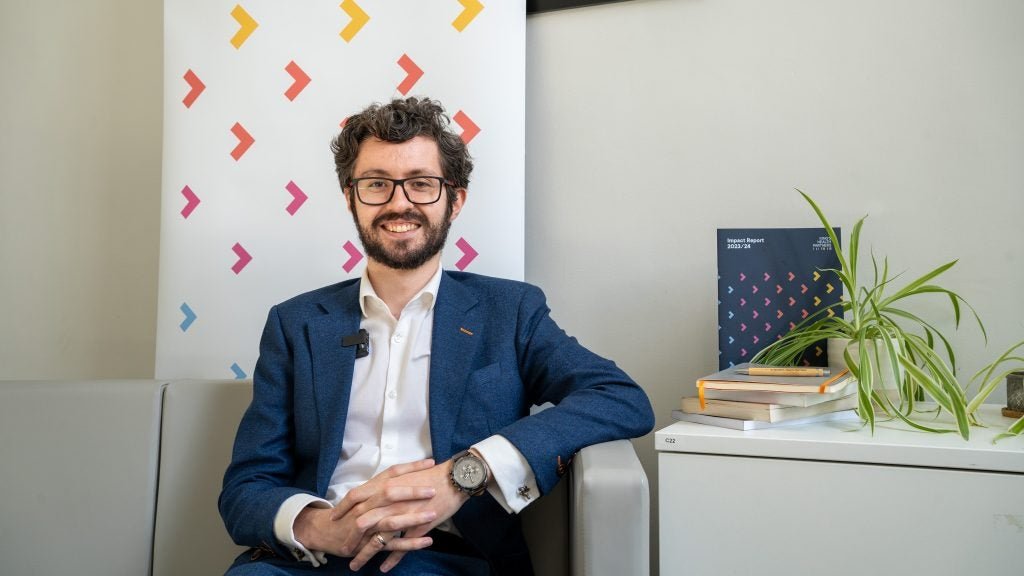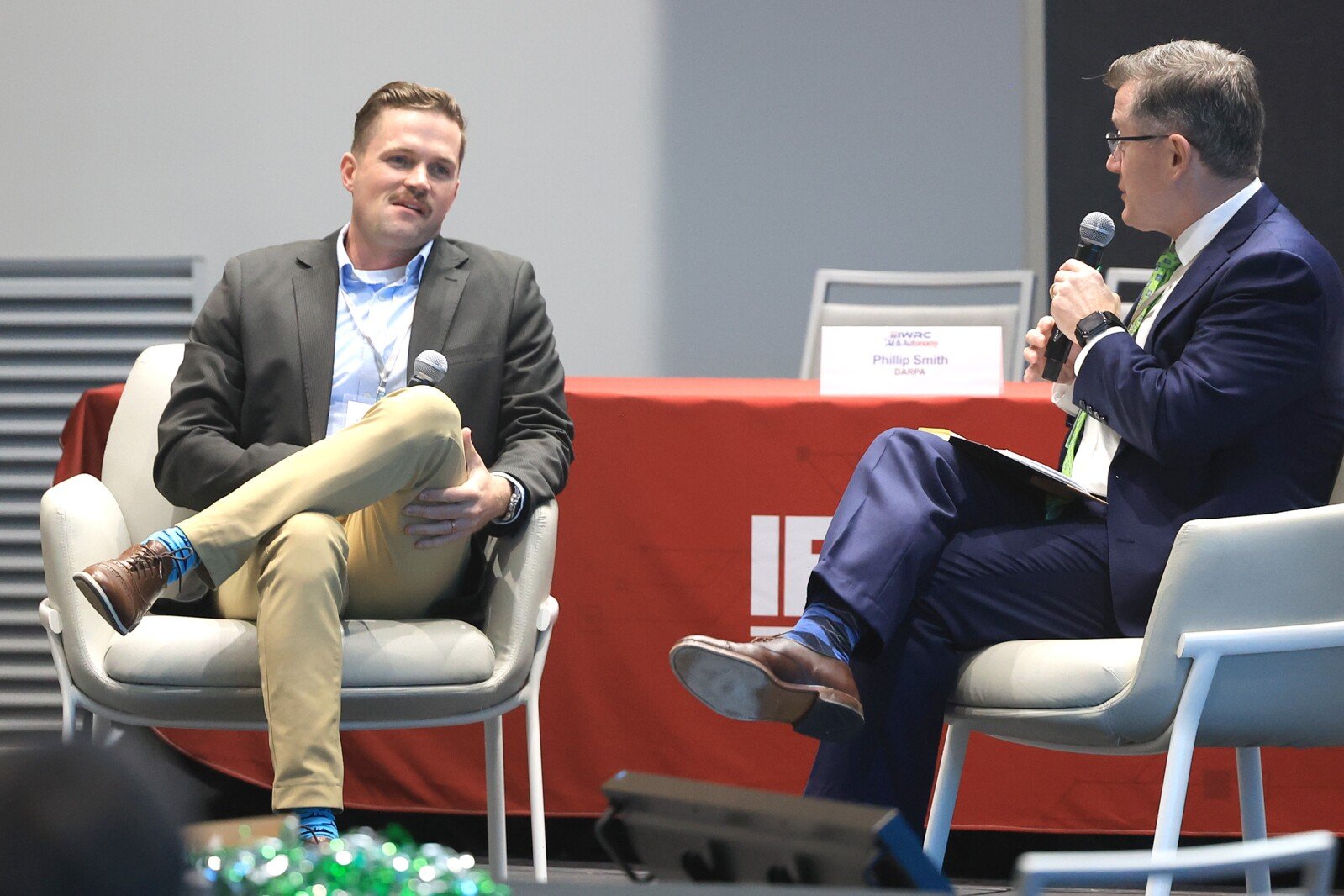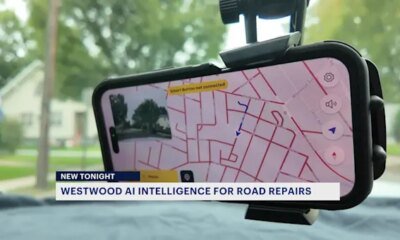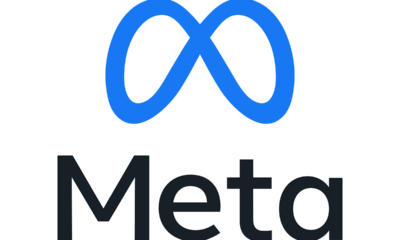Tools & Platforms
AI psychosis sees users ‘co-creating delusions with technology’ – expert

Clinicians and researchers should remain abreast of developments in artificial intelligence (AI) as the emergence of ‘AI psychosis’ marks the first time people are creating delusions together with technology, an expert has outlined.
Speaking on an episode of GlobalData’s Instant Insights podcast, Dr. Hamilton Morrin, a psychiatrist and a doctoral fellow at King’s College London, said: “This technology is developing a quite a rapid pace. In some areas, it hasn’t necessarily fully delivered yet on the promises made, but that doesn’t change the fact that it is very much different, and, from what we’ve seen before and in the past where you could describe people as having delusions about technology, now, for the very first time, people are having delusions with technology; this co-creation of delusional beliefs for a kind of echo-chamber-of-one effect, or some people have even used the term a ‘digital folie a deux’.

Discover B2B Marketing That Performs
Combine business intelligence and editorial excellence to reach engaged professionals across 36 leading media platforms.
“So, it really is, I think, important, certainly, for clinicians and researchers to remain abreast of developments in this area and understand how people are using them.”
Morrin was appearing on the podcast after so-called AI psychosis was in the news last week, when Mustafa Suleyman, the CEO of Microsoft’s consumer AI division, raised concerns about the growing number of cases being reported.
Suleyman wrote: “I’m growing more and more concerned about what is becoming known as the ‘psychosis risk’. and a bunch of related issues. I don’t think this will be limited to those who are already at risk of mental health issues. Simply put, my central worry is that many people will start to believe in the illusion of AIs as conscious entities so strongly that they’ll soon advocate for AI rights, model welfare and even AI citizenship. This development will be a dangerous turn in AI progress and deserves our immediate attention.”
Referencing Suleyman’s article, Morrin, who co-authored the recent paper Delusions by design? How everyday AIs might be fuelling psychosis (and what can be done about it), noted that, while we may not yet be at the point of AI being seemingly conscious, depending on what measure is used, for many people, that is not the case.
“Many people already feel that they’re interacting with something conscious,” he said. “And, even if that’s not the case, if they feel that way, that’s going to have an impact on their mental state and their emotional dependence.”

Presentation of AI psychosis
Morrin was quick to note that the term ‘AI psychosis’ may be a misnomer, with observations of it so far really only indicating delusions – “fixed, firm, false beliefs”. Psychosis, meanwhile, is a broader syndrome that can include delusions, but also hallucinations, schizophrenia, mood disorder and other mental and medical conditions.
“In these cases, at least from what we could see, from what was reported anecdotally, we only really saw evidence of delusions – none of the other kind of hallmark symptoms that you might see in a more classic psychotic disorder,” he explained. “Specifically, the delusions we saw had three main flavours, one of which was people believing that they’d had an awakening of sorts to the true nature of reality in a metaphysical sense. Another theme was people believing that they had formed contact with a sentient, powerful, all-knowing artificial intelligence. And the third theme was that of people developing intense emotional bonds and attachments with the AI chat bot in question.”
In addition to noting that there has yet to be an comprehensive study of AI psychosis, Morrin made clear that cases do not appear to be especially widespread. He added, though, that such is the rapid advancement of the technology and the new territory being charted, it is a cause for concern.
“I want to emphasise we don’t know necessarily how common this issue is,” he said. “And I want to emphasise that if this was something causing psychosis out of nowhere, completely, you know, de novo psychosis, we’d be seeing massive increases in presentations to any departments across the country and worldwide. I can say, at least for now, that certainly isn’t the case, so we’re not dealing with this new epidemic.
“But, given what we know about just how debilitating psychosis can be and how life destroying it can be for the person suffering it and those around them, it’s certainly something that companies should take notice of and do as much as possible to address – and even outside of the realm of psychosis, the this issue of emotional dependence as well is a growing matter that merits attention and consideration in terms of safeguards and collaboration with experts in the field.”
AI psychosis safeguards
Of potential safeguards that could be put in place, he commented: “There was a short piece in Nature where four safeguards were proposed by Ben-Zion, and these included the fact that AI should continually reaffirm its non-human status, that chatbots should flag patterns of language in prompts indicative of psychological distress, that there should be conversational boundaries (i.e. no emotional intimacy or discussion of certain risky topics like suicide) and that AI platforms must start involving clinicians, ethicists and human AI specialists in auditing emotionally responsive AI systems for unsafe behaviours.
“Beyond that, we suggest that there may also be some safeguards that would include limiting the types of personal information that one can share in order to protect privacy. Companies communicating clear and transparent guidelines for acceptable behaviour and use and provision of accessible tools for users to report concerns with prompt and responsive follow-up to ensure trust and accountability.”
Morrin added: “I think it’s incumbent on us as clinicians and researchers to also meet people where they’re at and try to help them on a day to day basis if they are using these models, and so we propose that all clinicians should have a decent understanding of current LLMs [large-language models] and how they’re used, that they should be comfortable to ask their patients how much they use them and for what in what capacities they do use them.”
Tools & Platforms
China Telecom Global Shines at the 10th Belt and Road Summit, Empowering the New Silk Road via AI for Good
HONG KONG, Sept. 10, 2025 /PRNewswire/ — From September 10 to 11, 2025, the 10th Belt and Road Summit was successfully held at the Hong Kong Convention and Exhibition Centre. China Telecom Global (CTG) participated prominently under the theme “Empowering the New Silk Road via AI for Good,” highlighting three core areas: the OneGrowth Global Partnership Initiative, AI global capabilities, and AI-driven applications. Through multiple benchmark cases, interactive scenarios, and physical displays, the exhibition systematically presented China Telecom’s cloud-network-intelligence-computing resource deployment and innovative AI applications along the Belt and Road, fully demonstrating its comprehensive strength and firm commitment to promoting regional collaborative development through digital technologies.
On the first day of the event, Ms. Wu Ting, AI Director of China Telecom Global, delivered a keynote speech titled “China Telecom Global: AI Blueprint and Capabilities”. She comprehensively presented CTG’s AI capabilities and architectural framework, highlighting a series of innovative achievements and practical applications in artificial intelligence. These included several cutting-edge AI products such as the OneTouch AI Engine, LLM Guardrail Platform, Enterprise No Code Agent Platform, and more, demonstrating CTG’s leading strength in artificial intelligence research and development and industrial application. Additionally, leveraging multiple demonstrated cases, she provided in-depth insights into CTG’s competitive advantages in building international digital infrastructure and delivering intelligent solutions for enterprises expanding globally.
At the summit, CTG featured a range of interactive highlights centered on its OneGrowth Global Partnership Initiative and global AI capabilities, comprehensively demonstrating its strength in AI+ technologies and ecosystem collaboration.
Empowering AI, Intergrow as One: Co-creating a New Digital Ecosystem
In the ” OneGrowth Global Cooperation Initiative” section, CTG highlighted its recently launched cooperation plan with a focus on three key ecological directions: AI+ Intelligent Empowerment, AI+ Comprehensive Mobile Global Cooperation, and AI+ Innovative Business, all guided by the four core principles of co-creation, sharing, co-governance, and win-win. The AI+ Intelligent Empowerment initiative is developing a global ecosystem computing power scheduling platform that integrates intelligent and general computing services while collaborating with partners to build scenario-based digital enablement platforms. The AI + Comprehensive Mobile Global Cooperation leverages a multidimensional mobile network covering “land-sea-air-space,” promoting cooperation in 5G, satellite communications, and Internet of Vehicles (IoV). Meanwhile, AI+ Innovative Business featured collaborations in visual network, exemplified by the transnational SeeLink Global Platform, which integrates AI algorithms, devices, cloud services, and applications to provide end-to-end solutions tailored to diverse customer needs.
Application in Action, Leadership in Intelligence, Interactive Demos Showcasing Technological Strength
In the “AI Global Capabilities” section, beyond showcasing its global digital infrastructure, the exhibit provided a clear overview of its resource network—including 53 submarine cables, 251 international PoPs (Points-of-Presence), and 15 overseas data centers. It also highlighted the capabilities and advantages of two major computing power engines: the AI data centers in Tseung Kwan O, Hong Kong, China and Jakarta, Indonesia. These demonstrate CTG’s core strength in reinforcing the foundation of the “Digital Silk Road” and supporting regional enterprises through digital transformation.
CTG prominently spotlighted its AI solutions and benchmark cases, including 5GC scenario applications and low-altitude economy service system. Through global applications such as supporting Chinese automotive companies expanding into Europe and assisting game developers in global operations, CTG demonstrated its deep practical achievements across Belt and Road markets. These cases underscore the company’ leading strength in driving industrial digital transformation and facilitating the global expansion of services.
Meanwhile, at the AI interactive experience and physical exhibition zone, CTG featured engaging activities such as AI-powered opera face-changing, a 5GC-enabled robotic dog, and the Tianshu drone. By seamlessly integrating traditional culture with cutting-edge artificial intelligence, CTG vividly demonstrated its innovative capabilities and technological expertise in cutting-edge fields such as 5G, AI, the Internet of Things, and the low-altitude economy. The interactive displays attracted extensive on-site participation and drew significant audience engagement.
During the summit, CTG engaged in on-site discussions with customers and partners from around the world to explore new opportunities within the Belt and Road digital economy. Moving forward, CTG will continue to leverage its strengths in cloud-network resources, AI technologies, and global services to provide efficient and reliable digital solutions for countries and regions along the route, further advancing the development of the “Digital Silk Road” to new heights.
Through its participation, CTG has fully demonstrated its capabilities as a world-class provider of digital-intelligent technology services in resource integration, technological innovation, and ecosystem influence. This exhibition underscored the company’s firm commitment to empowering high-quality development along the Belt and Road and co-creating a smart future through technological innovation.
SOURCE China Telecom Global

Tools & Platforms
OpenAI to Launch AI-Powered Jobs Platform — Campus Technology
OpenAI to Launch AI-Powered Jobs Platform
OpenAI announced it will launch an AI-powered hiring platform by mid-2026, directly competing with LinkedIn and Indeed in the professional networking and recruitment space. The company announced the initiative alongside an expanded certification program designed to verify AI skills for job seekers.
The OpenAI Jobs Platform will use artificial intelligence algorithms to match candidates with employers based on demonstrated AI competencies rather than traditional resume keywords. The platform targets businesses seeking workers proficient in automation, prompt engineering, and AI implementation across various industries.
OpenAI is collaborating with major employers, including Walmart and Boston Consulting Group, to develop the platform’s functionality. Walmart, the largest private employer in the United States with 1.6 million workers, will initially provide free certification access to all US employees.
The Texas Association of Business plans to use the platform to connect local employers with candidates capable of supporting IT modernization projects, according to OpenAI’s announcement.
The company is expanding its OpenAI Academy, a free learning platform that has reached over two million users, to offer formal AI certifications. The program will cover skills ranging from basic workplace AI applications to advanced prompt engineering techniques.
Training and certification testing will occur within ChatGPT’s Study Mode, allowing candidates to prepare and complete credentials without leaving the application. OpenAI aims to certify 10 million Americans by 2030.
The initiative positions OpenAI against established players in the professional networking market. LinkedIn maintains over one billion members globally, while Indeed processes 27 hires per minute with 615 million registered job seekers.
The platform also competes with LinkedIn Learning’s educational offerings, potentially creating tension with Microsoft, OpenAI’s primary investor, with a reported $13 billion stake. Microsoft has previously identified OpenAI as a competitor in specific business segments despite their partnership.
Labor market data support OpenAI’s focus on AI competencies. Research by Lightcast analyzing over one billion job postings found that positions requiring AI skills offer salaries averaging 28% higher than comparable roles without such requirements. Jobs demanding multiple AI skills command premiums up to 43% above standard compensation levels.
The demand spans industries as companies integrate artificial intelligence into operations for task automation, data analysis, and product development. Employers increasingly seek workers capable of practical AI application rather than advanced technical programming skills.
The platform will allow employers to describe requirements in natural language, with AI systems identifying candidates who demonstrate relevant capabilities through portfolio work and practical experience. This approach differs from traditional keyword-based matching systems used by existing job platforms.
OpenAI’s system aims to surface candidates based on actual project experience and demonstrated competencies rather than resume optimization techniques commonly used on current platforms, the company said.
About the Author
John K. Waters is the editor in chief of a number of Converge360.com sites, with a focus on high-end development, AI and future tech. He’s been writing about cutting-edge technologies and culture of Silicon Valley for more than two decades, and he’s written more than a dozen books. He also co-scripted the documentary film Silicon Valley: A 100 Year Renaissance, which aired on PBS. He can be reached at [email protected].
Tools & Platforms
Grand Forks believes in the future of AI and technology, Mayor Bochenski says at AI and Autonomy Summit – Grand Forks Herald

GRAND FORKS — Grand Forks believes in the future of artificial intelligence and technology and is working to grow in those areas, Mayor Brandon Bochenski told an audience brought together to discuss AI and autonomous systems in Grand Forks and the state.
“We’re standing on the great work that’s happened before us, and just trying to enhance it and make it better,” Bochenski said. “There’s 10, 20 years of work that goes into Grand Forks being put on the map. I’m just grateful that we’re on the map today.”
His sentiments were echoed by others attending the summit, one of the Innovation, Workforce and Research Conferences put on by IEEE-USA, a technical professional organization. The event was held Wednesday, Sept. 10, at the University of North Dakota Memorial Union. Between discussions on state innovation, education, workforce, networking and investing in AI and autonomy, leaders in the fields of AI and autonomy spoke to its presence at UND, Grand Forks and North Dakota as a whole.
Scott Snyder, vice president for research and economic development at UND, mirrored Bochenski’s statement on the decades of work put into the community. UND has been on the “absolute cutting edge of uncrewed and autonomous technologies and systems for well over two decades,” he said. The university also has multiple private and university partners, as well as partnerships with the Department of Defense, National Aeronautics and Space Administration (NASA), Department of Homeland Security, Federal Aviation Administration and other federal government entities.
“UND is at the center of one of the most vibrant environments for the development and deployment of autonomous systems around the world,” Snyder said.
An example of engagement between UND and the federal government was a discussion between UND President Andrew Armacost and Phillip Smith, the program manager for the Tactical Technology Office at DARPA (Defense Advanced Research Projects Agency).
Smith admitted he doesn’t like the word “autonomy,” as he believes it acts similarly to words like “cyber” and “synergy” as jargon people use but don’t actually understand. Breaking down the subsections of autonomy and informing people is important, he said. When Armacost asked Smith what his definition of autonomy is, he said, “software that people don’t understand.”
“It is just an algorithm that cannot be explained to people until we get to general AI,” Smith said. “Humans actually don’t understand what is happening. … Machines are supposed to be serving humans, and humans don’t even know what they want, so that’s a really hard thing.”
Smith said DARPA is working with GrandSky, testing drones that will be able to find a ship at sea, and then orient and land on it without human connection. GrandSky is an aviation business park west of Grand Forks that specifically focuses on the UAS industry.
“That’s the program that we have out here in North Dakota testing, and it’s been really fun,” he said.
Armacost said each person in the room has the opportunity to engage with DARPA, including industry partners, university partners and others.
“They have a large number of avenues that they use to cooperate with their work on technology development,” he said.
The summit itself was the product of UND leaders interacting with IEEE-USA and having an interest in showcasing what the region is doing. Mark Askelson, vice president for research-national security, said he was at a Sioux Falls, South Dakota, summit with Ryan Adams, the dean of engineering and mines, and spoke with some IEEE-USA staff about possibly holding an event in Grand Forks. Askelson said it’s an opportunity to show what the region is doing to more people who don’t know about it. It also is helping forge new connections.
“Despite the fact that we are nationally recognized, I would argue in some of these areas, there’s still a lot of people that don’t know about us,” he said. “They don’t understand some of the things that we do, so that is a great opportunity to bring those people here so they can see us. And, in my experience, once we can get somebody on the ground to see what we have going on, the light bulb goes on for them. That creates more opportunity for us to work with them and for us to innovate.”
-

 Business2 weeks ago
Business2 weeks agoThe Guardian view on Trump and the Fed: independence is no substitute for accountability | Editorial
-
Tools & Platforms4 weeks ago
Building Trust in Military AI Starts with Opening the Black Box – War on the Rocks
-

 Ethics & Policy2 months ago
Ethics & Policy2 months agoSDAIA Supports Saudi Arabia’s Leadership in Shaping Global AI Ethics, Policy, and Research – وكالة الأنباء السعودية
-

 Events & Conferences4 months ago
Events & Conferences4 months agoJourney to 1000 models: Scaling Instagram’s recommendation system
-

 Jobs & Careers2 months ago
Jobs & Careers2 months agoMumbai-based Perplexity Alternative Has 60k+ Users Without Funding
-

 Podcasts & Talks2 months ago
Podcasts & Talks2 months agoHappy 4th of July! 🎆 Made with Veo 3 in Gemini
-

 Education2 months ago
Education2 months agoMacron says UK and France have duty to tackle illegal migration ‘with humanity, solidarity and firmness’ – UK politics live | Politics
-

 Education2 months ago
Education2 months agoVEX Robotics launches AI-powered classroom robotics system
-

 Funding & Business2 months ago
Funding & Business2 months agoKayak and Expedia race to build AI travel agents that turn social posts into itineraries
-

 Podcasts & Talks2 months ago
Podcasts & Talks2 months agoOpenAI 🤝 @teamganassi






















